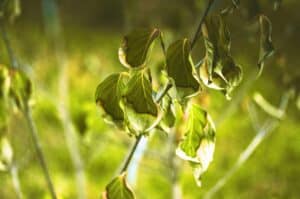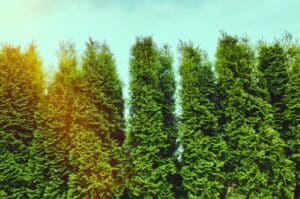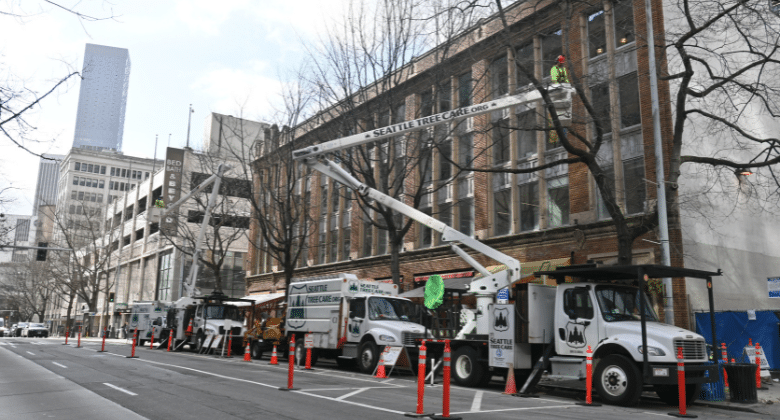The Surprising Way to Save Money on Tree Care in Seattle: Tree Growth Regulators
Discover how tree growth regulators save Seattle homeowners money on pruning, damage repair and tree care. Slower growth means healthier, safer trees for less cost.
Most homeowners dream of mature trees on their property to enjoy their beauty, shade, and the wildlife they attract. But what many people don’t realize is that trees in urban and suburban environments require ongoing care and maintenance.
If tree care is neglected, the health of your trees can decline to the point of becoming a hazard, putting your family, your home, and other personal property at risk. And the faster your trees grow, the more maintenance they are going to require to prevent them from damaging your home, nearby power lines, or structures like sidewalks and driveways.
The good news is that you can limit the amount of maintenance and pruning you need to do over time by slowing the growth of your trees. This can save a lot of money on tree care over the years! And the best way to do this is with something most homeowners in Seattle have never heard of – tree growth regulators. Read on to learn what they are and how they can save money on tree care in the long run.
Key Takeaways
- Tree growth regulators (TGRs) are chemicals that can significantly slow down the growth rate of trees for 2-3 years after a single application.
- Using TGRs can save homeowners money on tree maintenance costs in the long run by reducing the frequency of required pruning and minimizing damage to structures like homes, utility lines, sidewalks, etc.
- Slower-growing trees treated with TGRs develop stronger root systems and are less likely to topple over or drop heavy limbs during severe weather events.
- In addition to controlling growth, TGRs can increase a tree’s resistance to diseases, drought tolerance, and ability to adapt to stressful conditions like construction projects.
- While providing multiple benefits, TGRs should be applied by trained professionals who can properly dose the tree based on species, size, health condition, and location.
What are Tree Growth Regulators?
Tree growth regulators (TGRs), also known as tree growth retardants, are chemicals that control or alter the growth of a tree. They’re part of the larger family of plant growth regulators (PGRs) that have been used for decades, largely in agriculture. TGRs work by inhibiting the synthesis of gibberellin, a hormone that controls cell expansion and shoot elongation, drastically suppressing new growth for about 2 to 3 years with a single application.
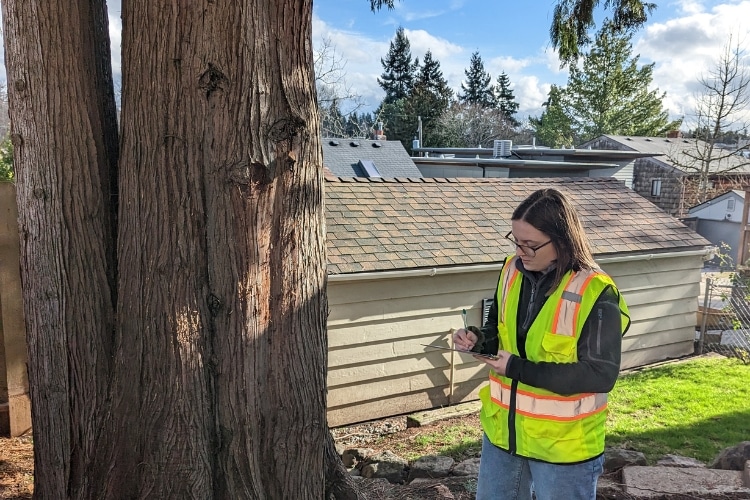
How Growth Regulators Can Save Money on Tree Care
The most common form of tree maintenance is pruning. Pruning is the selective removal of branches from a tree’s canopy. And if trees are large, pruning should only be completed by trained, certified arborists with proper equipment to prevent unnecessary injury or damage.
The faster a tree grows, the more often it will require pruning, and the more you’ll need to spend on tree care to keep your trees safe and healthy. Luckily, tree growth regulators are available to help property owners save money on tree care. Here’s how they can help you save.
Slower Growth Means Less Pruning
Slower tree growth means less frequent pruning is required to keep your tree a manageable size, prevent it from hitting nearby buildings or power lines, and maintain an attractive shape. Less pruning means you won’t need to hire an arborist nearly as often.
Just one application of a growth regulator like Cambistat can reduce the growth rate of trees by 40% for up to three years. As a result, trees treated with TGRs might only need to be pruned every 5-6 years. Trees that are left to grow naturally may need pruning every 2-3 years.
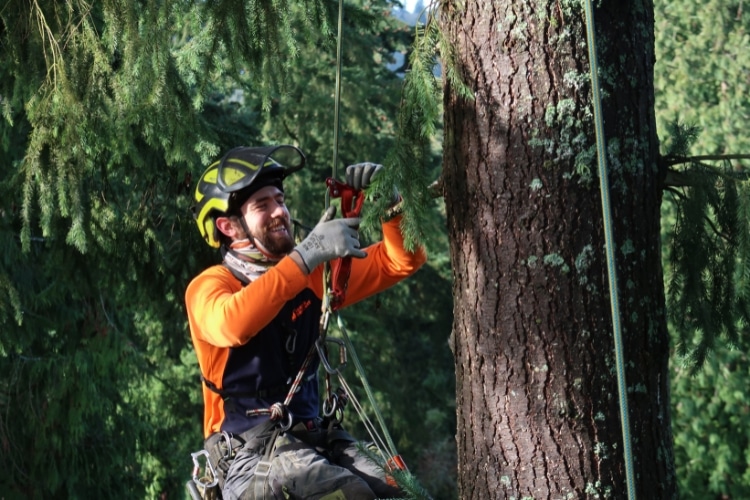
Smaller Trees Cost Less to Prune
The larger your trees, the more expensive they will be to prune (or to remove). Larger trees require larger crews of trained arborists, and often heavy equipment like cranes and lifts.
By applying TGRs early in a tree’s life, you can limit the mature size of the tree. This makes it easier to prune and, therefore, much more affordable.
TGRs also limit the amount of biomass a tree produces. So, when pruning does happen, there’s less material that needs to be removed from a tree, making the process faster and more cost-efficient than pruning untreated trees.
Safer Trees Means Less Risk of Damage
When a tree is treated with TGRs, energy is diverted from branch and leaf growth to increased root production, leading to larger, stronger roots and creating a safer, more reliable tree.
With stronger roots, a tree is much less likely to topple in severe weather. This greatly reduces the risk of having to pay for emergency tree removal or to repair damage to your home or yard caused by a fallen tree.
And because treated trees will limit branch growth, there’s less chance of weak or dead branches breaking and falling onto your home, car, or other personal property.
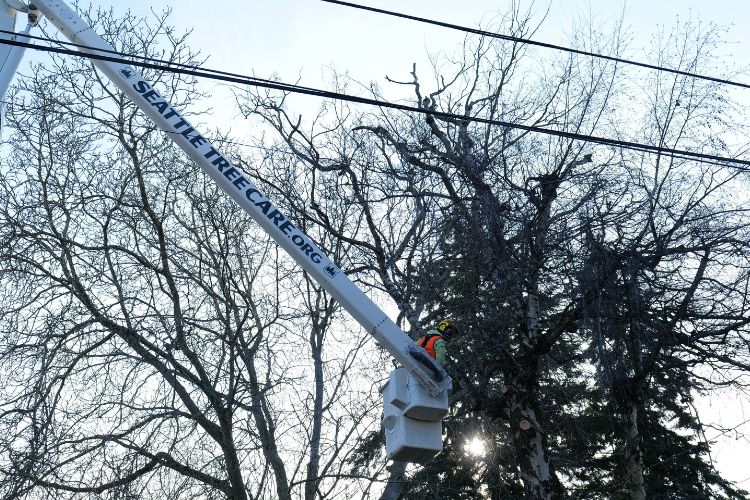
Less Likely to Damage Power Lines or Structures
One of the biggest problems with large trees is the damage they can do to power lines. Trees growing in or near power lines can be very dangerous, often resulting in fires, electrocution, or power outages. Trees near power lines often need more frequent pruning to prevent damage, resulting in more expense for the owner.
Trees left to grow on their own can also cause damage or pose a threat to houses, roofs, sidewalks, driveways, fences, and other structures.
If you have trees growing near power lines or other structures, it may be best to apply tree growth regulators now to control their growth and reduce the risk of damage. TGRs also help trees grow more compactly. Branches won’t spread as far, limiting their reach and need for pruning.
TGRs Increase Disease Resistance
Numerous studies suggest that TGRs may be able to slow or reduce the progression of fungal diseases. This could mean less money spent on treating tree diseases, which can be especially common in the Puget Sound area, thanks to all the moisture in the air.
How Do Growth Regulators Work?
To understand how TGRs work, you need to know how trees communicate internally. A tree communicates by moving chemicals. Different parts of the tree can communicate by sending chemical signals.
TGRs are chemicals, applied by a plant health care specialist, that a tree takes up through its roots. These chemicals become signals, sent throughout the tree, that suppress growth.
They don’t stop tree growth. They just slow it dramatically for about 2-3 years. Tree growth regulators are used by many municipalities to manage large numbers of trees in public places, like along city streets or in public parks.
But homeowners can benefit from them as well to make tree maintenance much easier and prevent damage to structures like driveways and sidewalks.
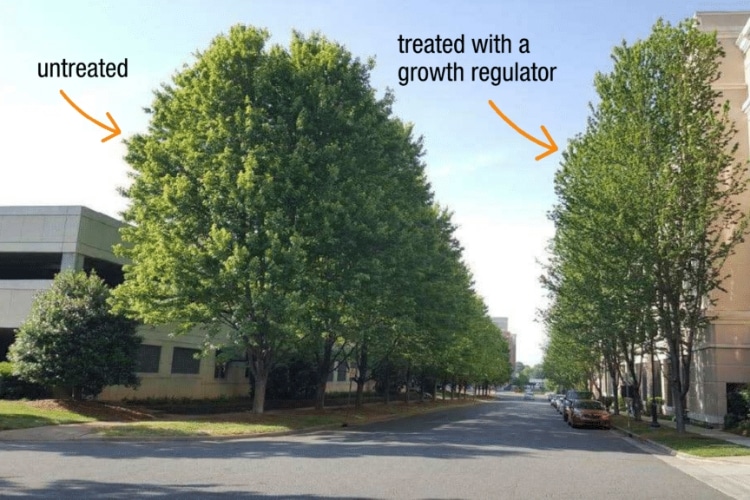
Other Benefits of Using Growth Regulators
Not only can growth regulators save you money on tree care, but they can provide numerous other benefits as well. Here are a few more reasons to consider using TGRs on your property.
Growth Regulators Support Tree Health
With TGRs, trees become healthier. They spend less energy producing new branches and leaves, and instead focus that energy on stockpiling defensive compounds within the tree, making it more capable of fighting off pests and diseases.
The excess energy also encourages fibrous root growth, allowing the tree more opportunities to take in nutrients from the soil.
Helps Trees Better Adapt to Poor Soil and Drought
TGRs can help trees better adapt to poor, nutrient-deficient soil. They also help trees manage water use more efficiently, so they are more capable of withstanding drought than non-treated trees. This helps trees remain healthy during Seattle’s hot, dry summers.
Prepare Trees For Upcoming Stress
Arborists often employ the use of TGRs on trees that are expected to undergo considerable stress in the future. For example, if the roots of a tree need to be trimmed for a construction project, the tree may be treated with a growth regulator beforehand. This pre-stress conditioning can help the tree recover and adapt more quickly, rather than succumb to stress.
More Vibrant, Beautiful Leaves
Trees treated with TGRs are known to have darker, greener leaves than untreated trees, making them more aesthetically pleasing. This is due to an increased concentration of chlorophyll in the leaves of treated trees.
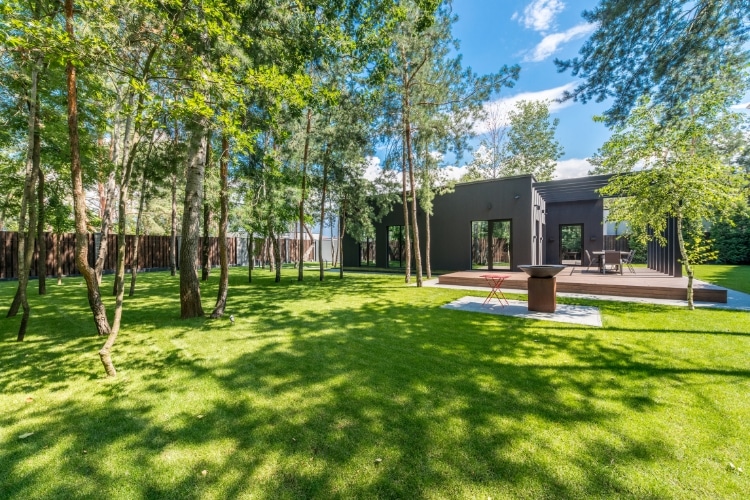
How to Apply Growth Regulators
Growth regulators are best applied by trained plant health care specialists. For example, at Seattle Tree Care, treatment rates are personally prescribed by an ISA Certified Arborist project manager. Before recommending treatment, they’ll consider the tree species’ sensitivity to growth retardants, the diameter at standard height (DSH), the tree’s overall health and condition, and the tree’s relative location on your property.
TGRs are usually injected into the soil or applied as a soil drench immediately adjacent to the tree trunk. From there, the roots take up the chemicals, circulating them throughout the crown of the tree to the growing points near the branch tips.
A properly dosed application will effectively limit tree growth for 2-3 years before another application is needed.
FAQs About Tree Growth Regulators
Q. What types of trees respond best to growth regulators?
A. While growth regulators can be used on many tree species, they tend to work better on some than others. Trees that typically respond well include maple, ash, elm, oak, sweetgum, and certain fruit trees. Evergreen trees like pine or fir may not respond as dramatically.
Q. Is there an ideal time of year to apply tree growth regulators?
A. The best time to apply growth regulators is typically in the early spring before bud break when trees are just coming out of dormancy. This allows the tree to absorb the regulators as it resumes active growth.
Q. How long do the effects of tree growth regulators last?
A. Most tree growth regulators will effectively slow growth for 2-3 years after a single application. After that time, the effects will start to diminish and another application may be needed to maintain the reduced growth rate.
Q. Are there any negative side effects from using growth regulators?
A. When applied properly by a professional, negative effects are minimal. Temporary issues like leaf scorching or inhibited fall color changes may occur but are relatively rare. Over-application can potentially stunt growth excessively.
Q. Do growth regulators affect fruit/flower production on ornamental trees?
A. Some growth regulators can reduce flowering and fruit set, at least temporarily, as the tree’s energy goes into root and vegetative growth instead of reproduction. This may be a consideration if you’re growing fruit trees or trees prized for their spring flowers.
Let Seattle Tree Care Help You Manage Tree Growth Effectively
Are you worried about the height of your trees? Do you want slow, predictable growth to limit the maintenance you’ll need to perform on your trees in the coming years? Do you want your trees to be more compact, healthier, stronger, and more tolerant of poor soil and drought-like conditions?
Then you’d benefit from the application of tree growth regulators. If you live in the greater Seattle metro area, contact the tree health experts at Seattle Tree Care to provide a custom plan for your trees. Fill out this quick form to request a free tree care estimate or call us today at 206-789-0534 to determine the best option for your trees.
SEE MORE ARTICLES FROM OUR b(LOG)
We've got you covered with tips, resources, updates, how-to's, and other helpful information about trees and landscapes in Seattle, Puget Sound, and King County, WA. Join the thousands of smart local residents who get the monthly newsletter from Seattle Tree Care for helpful information you won't want to miss!
There's no spam - we promise! We are committed to keeping your e-mail address confidential. We do not sell, rent, or lease our contact data or lists to third parties.




